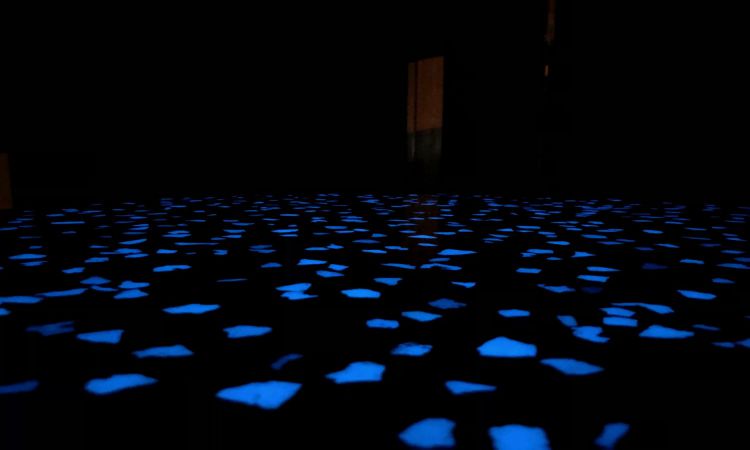 Glow-in-the-dark concrete is a fascinating and innovative material that has taken the construction industry by storm. It’s no surprise that it’s become so popular given how it can transform the look and feel of any space. With its mesmerising glow, it can turn a plain sidewalk or driveway into a magical pathway or make a poolside or patio look otherworldly at night.
Glow-in-the-dark concrete is a fascinating and innovative material that has taken the construction industry by storm. It’s no surprise that it’s become so popular given how it can transform the look and feel of any space. With its mesmerising glow, it can turn a plain sidewalk or driveway into a magical pathway or make a poolside or patio look otherworldly at night.
However, there’s a downside to this luminescent material that many people are not aware of: it can attract pests. Yes, you read that right. The same feature that makes glow-in-the-dark concrete so unique and appealing to the human eye can also make it an irresistible magnet to various bugs, mosquitos, and other unwanted visitors.
In this blog post, we’ll explore the surprising ways glow-in-the-dark concrete can attract pests, the potential dangers of pest infestations, and what you can do to prevent them from taking over your space.
What Pests Are Attracted to Glow-in-the-Dark Concrete?
Several types of insects and pests are drawn to the bright and alluring glow of the concrete. Some of the most common ones are mosquitos, moths, beetles, and other flying insects. These bugs are known to fly towards light sources, and glow-in-the-dark concrete is no exception. Once they detect the glow, they’ll fly towards it, hoping to find food or a place to rest.
Why Are Pests Attracted to Glow-in-the-Dark Concrete?
The main reason why pests are attracted to glow-in-the-dark concrete is the colour spectrum they see. Most insects, including mosquitos, see a broader range of colours than humans do, which means that the glow-in-the-dark concrete appears much brighter and more intense to them.
Additionally, the heat generated by the concrete can attract bugs that are sensitive to temperature changes. They’ll feel the warmth emanating from the concrete and will be drawn to it, thinking it’s a good spot to hang out.
Another factor that can attract pests is the smell of the concrete. Glow-in-the-dark concrete is usually made with photoluminescent pigments that are mixed with the concrete mix. The chemicals in these pigments can give off a smell that bugs find attractive.
Lastly, glow-in-the-dark concrete can retain moisture, making it an ideal breeding ground for certain types of insects. For example, mosquitos need stagnant water to lay their eggs, and if they find a moist spot on or near the concrete, they’ll be more likely to infest the area.
The Dangers of Pests Attracted to Glow-in-the-Dark Concrete
While the glow-in-the-dark concrete itself isn’t dangerous, the pests it attracts can be. Mosquitos, for instance, can transmit various diseases such as the West Nile virus, dengue fever, and malaria. They can also cause itchy and annoying bites that can ruin a good time outdoors.
Other pests, such as beetles and moths, can cause property damage. They can chew through fabrics, wood, and other materials, causing costly repairs. In severe cases, they can even compromise the structural integrity of buildings and homes.
Additionally, a pest infestation can significantly decrease the value of a property. If a building inspector finds that the property is infested with pests, it can lead to a failed inspection and affect the sale of the property.
Aesthetic Impacts to Think About
On top of its impact on attracting bugs, there’s also its impact on other people. While glow-in-the-dark concrete can add a unique and visually appealing element to any space, it’s important to consider the potential impact on aesthetics. The bright and intense glow of the concrete can be a distraction or nuisance to some people, especially in areas such as residential neighbourhoods or parks.
It’s important to consider the surroundings and the intended purpose of the glow-in-the-dark concrete before installation. If the concrete is intended for use in a residential area, for example, it may be important to choose a more subdued glow that won’t be as noticeable to neighbours.
In addition to considering the impact on aesthetics, it’s also important to ensure that the installation of glow-in-the-dark concrete complies with local building codes and regulations. Consult with a building inspector or other qualified professional to ensure that the installation is up to code and that all necessary permits have been obtained.
What Can You Do to Prevent Pests from Being Attracted to Glow-in-the-Dark Concrete?
Fortunately, there are several things you can do to prevent pests from being attracted to glow-in-the-dark concrete. Here are a few tips:
-
Turn off the lights at night:
The most effective way to prevent pests from being attracted to glow-in-the-dark concrete is to turn off the lights at night. This may not be ideal if you’re trying to showcase the glow-in-the-dark effect, but it’s the most effective way to keep pests away.
-
Use pest-repelling lights:
If you can’t turn off the lights at night, consider using pest-repelling lights instead. These lights emit a wavelength that is not attractive to most bugs, and they won’t be drawn to the glow-in-the-dark concrete.
-
Keep the area clean:
Pests are attracted to areas with food, water, and shelter. Keep the area around the glow-in-the-dark concrete clean and free of debris, standing water, or food waste.
-
Seal any cracks or crevices:
Bugs can enter a space through the smallest cracks or gaps. Make sure to seal any cracks or crevices in the concrete or surrounding structures to prevent pests from entering.
-
Hire a professional pest control company:
If you’re dealing with a severe pest infestation, it may be time to call in the experts. A professional pest control company can properly assess the situation and come up with a tailored plan to eliminate the pests and prevent them from coming back.
-
Regular maintenance:
Over time, debris, leaves, and dirt can accumulate on the surface of the concrete, providing a breeding ground for pests. To keep the area clean and pest-free, it’s important to regularly clean and maintain the concrete. Use a broom or brush to sweep away any debris or leaves that have accumulated on the surface of the concrete. If necessary, use a hose or pressure washer to remove any dirt or grime that has built up over time. Be sure to use a mild detergent or cleaning solution that won’t damage the concrete.
Conclusion
Glow-in-the-dark concrete is an exciting and innovative material that can transform the look and feel of any space. However, the same feature that makes it unique and attractive to the human eye can also make it an irresistible magnet to various pests, including mosquitos, beetles, and moths. This can be dangerous, as these pests can transmit diseases, cause property damage, and decrease the value of a property. To prevent pest infestations, turning off lights at night, using pest-repelling lights, keeping the area clean, sealing any cracks or crevices, and hiring a professional pest control company are some effective measures to take. Additionally, it’s important to consider the potential impact on aesthetics and comply with local building codes and regulations. By taking these precautions, you can enjoy the beauty of glow-in-the-dark concrete without attracting unwanted visitors.




